Tessa’s Recipe Rundown
Taste: Buttery and garlicky, AKA, heaven!
Texture: A lightly golden crust hides the soft and fluffy interior, with the perfect amount of chewy.
Ease: Homemade breadsticks may sound intimidating but there’s only a handful of ingredients. You can do this!
Why You’ll Love This Recipe: Better than the restaurant, and super impressive.
This post may contain affiliate links. Read our disclosure policy.
I cannot tell you how positively tantalizing these breadsticks smell while baking.
As someone who went to culinary school and has studied the science of homemade bread, I’m not afraid to admit there’s nothing very fancy about this recipe.
In fact, it only has 7 ingredients. No complicated resting or rising periods. It’s about as simple as it gets.
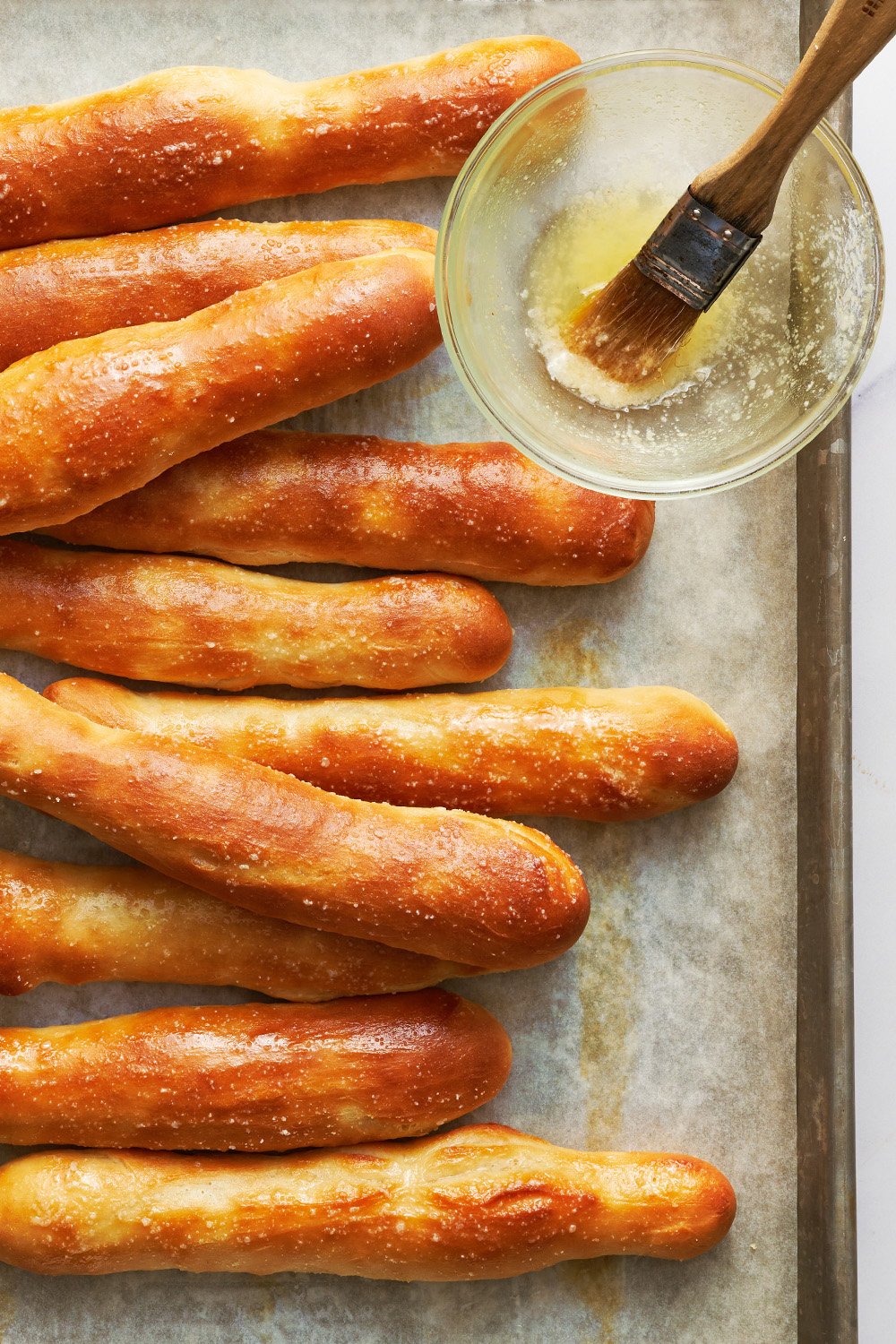
And yet, it transports me back to being a kid going to Olive Garden as a special treat, only to fill up entirely on breadsticks.
This homemade breadsticks recipe is about 1,000x better than the restaurant version. I promise, your whole family will go crazy for this copycat recipe at Sunday night dinner. Especially when paired with a rich soup or sauce for dipping!
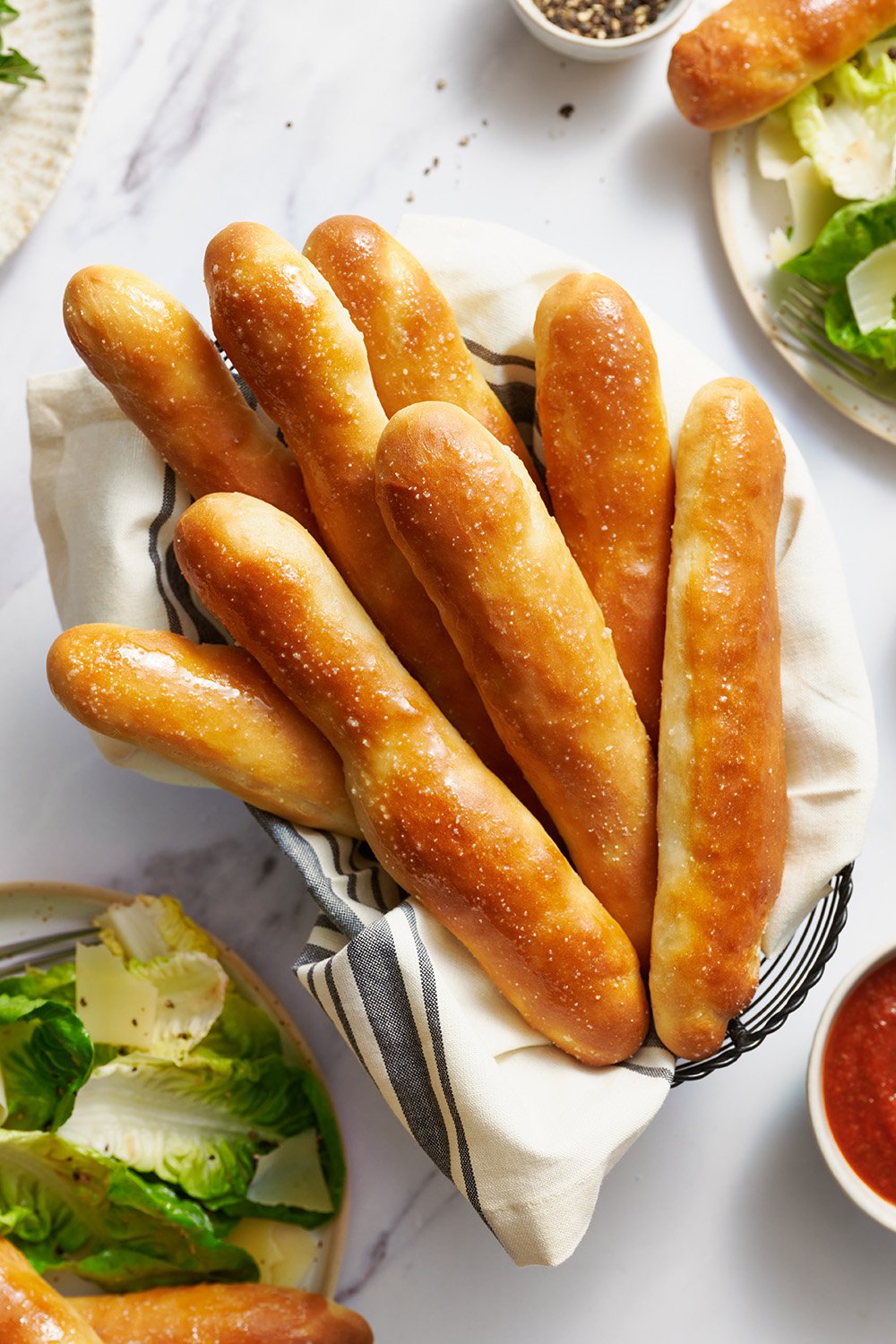
You don’t need any fancy skills, equipment, or know-how to nail this recipe. You do need to be forewarned…
These breadsticks are positively irresistible!
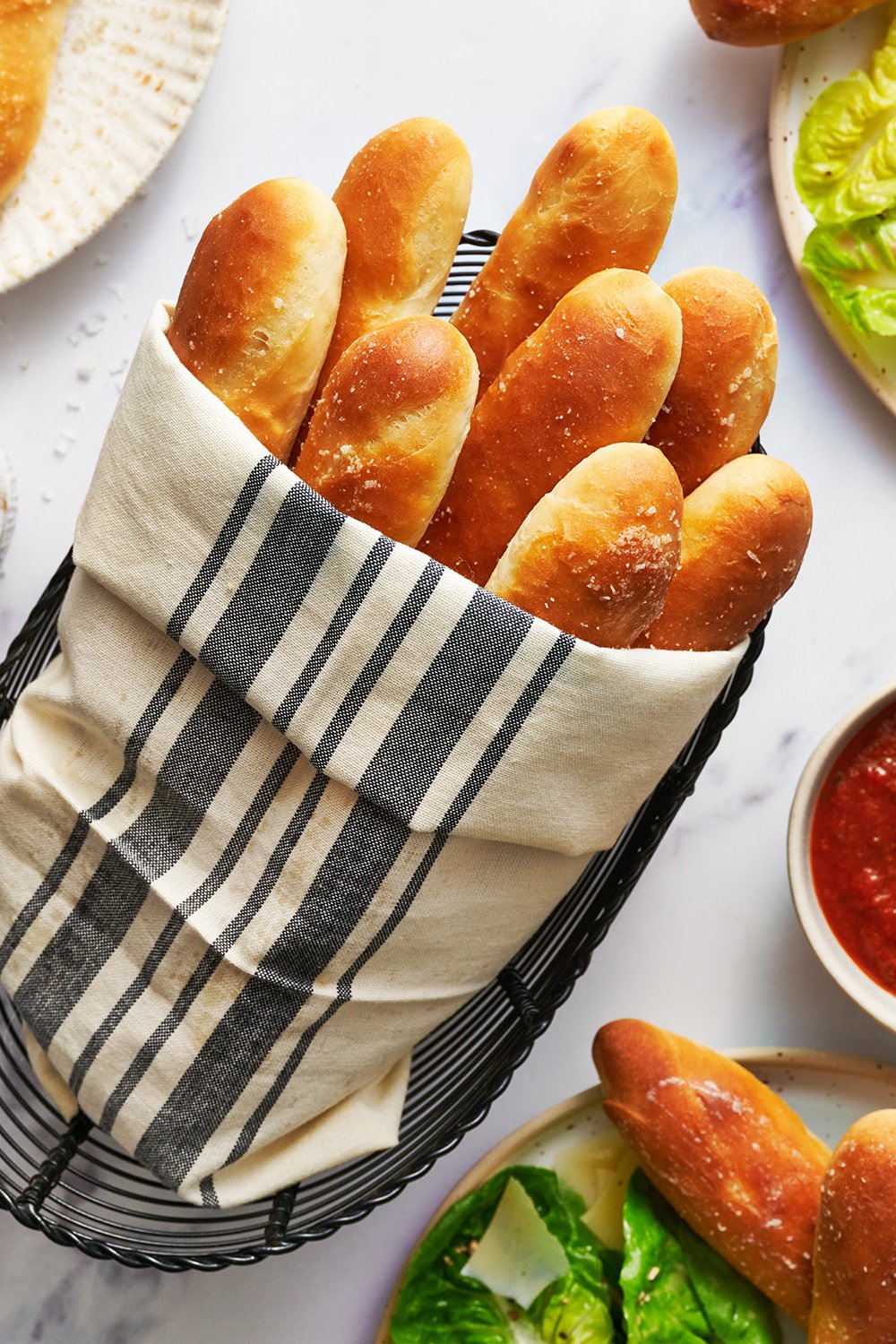
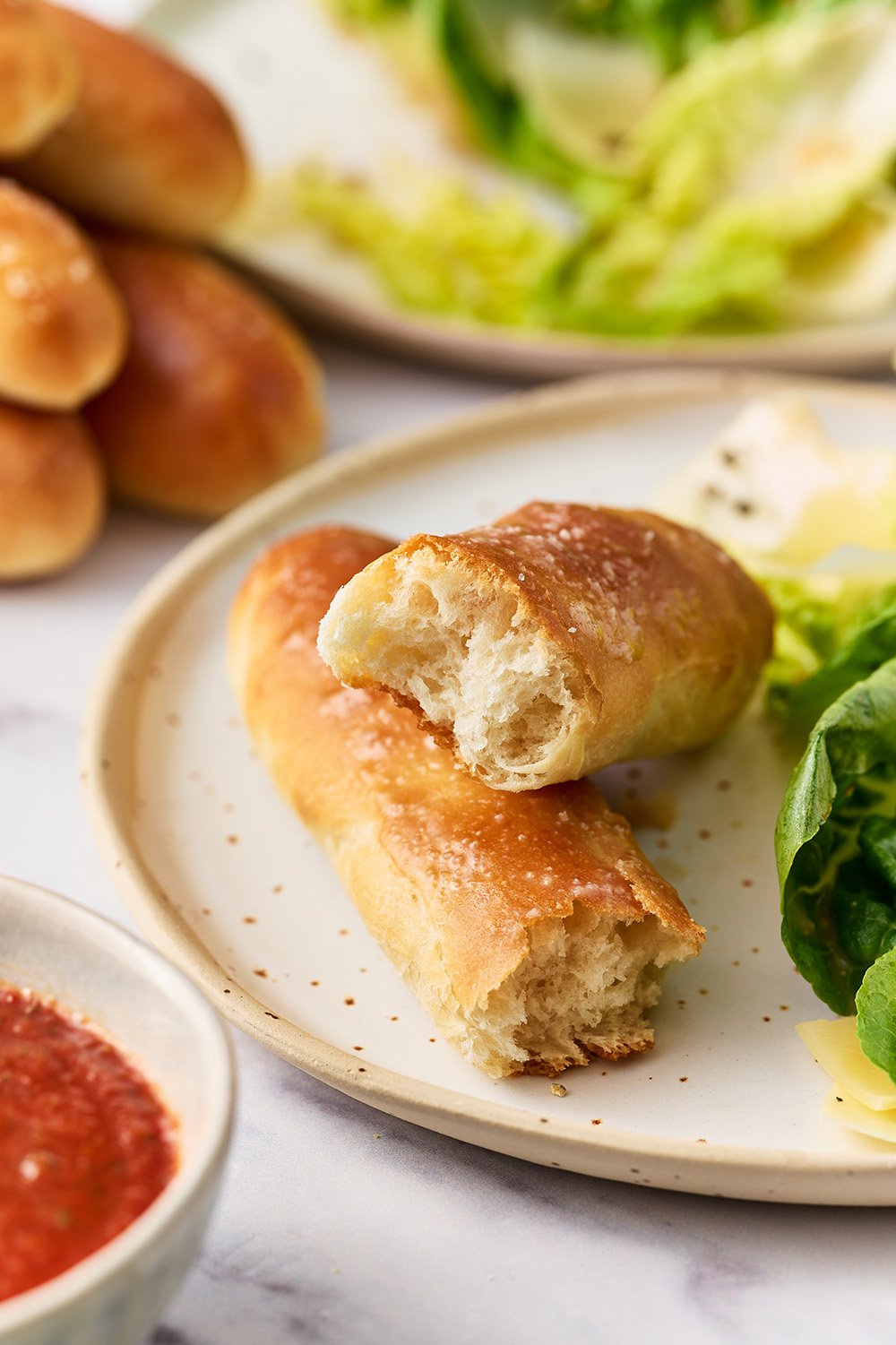

Sprinkle of Science
3 Tips for Perfect Breadsticks:
- Water: Be sure to use water that is not too hot. Hot water will kill the yeast and prevent the breadsticks from rising. 100-110°F is perfect.
- The Sugar: There’s a little in these breadsticks to help activate the yeast, tenderize the breadsticks, and make them a little softer. Don’t skip the sugar! I promise you won’t find the breadsticks sweet. Learn more about sugar’s role in baking here.
- Measure correctly: Be sure to measure your ingredients correctly. When measuring by volume (using cups), it can be super easy to accidentally over-measure ingredients, especially flour. I highly recommend using a digital kitchen scale, but if you don’t have one, use the spoon-and-level method.
Do I Have to Use Bread Flour? Can I Use All-Purpose Flour Instead?
Bread flour has a higher level of protein content than all-purpose flour, which helps create taller, well-rounded breadsticks with a nice chewy, fluffy texture.
If you don’t have bread flour, use the same amount of all-purpose flour. Keep in mind that your kneading time will increase to properly develop the gluten and your breadsticks may turn out more soft than chewy.
Are Olive Garden Breadsticks Vegan?
These Copycat Olive Garden Breadsticks are not vegan. However, several readers have had success with Country Crock plant-based sticks (avocado oil-based) or using olive oil in the dough and Earth Balance for the topping. If you give anything else a try, let me know how it goes in the comments!
Which Yeast Should I Use for Breadsticks?
- This recipe utilizes a shortcut ingredient: instant yeast, also called rapid rise or quick rise yeast.
- One of the three should be available at most grocery stores, or you can buy my all-time favorite yeast on Amazon here.
- These types of yeast are specifically formulated to allow you to skip proofing. You can add instant yeast directly into the mix with all of the ingredients.
Help! I Only Have Active Dry Yeast!
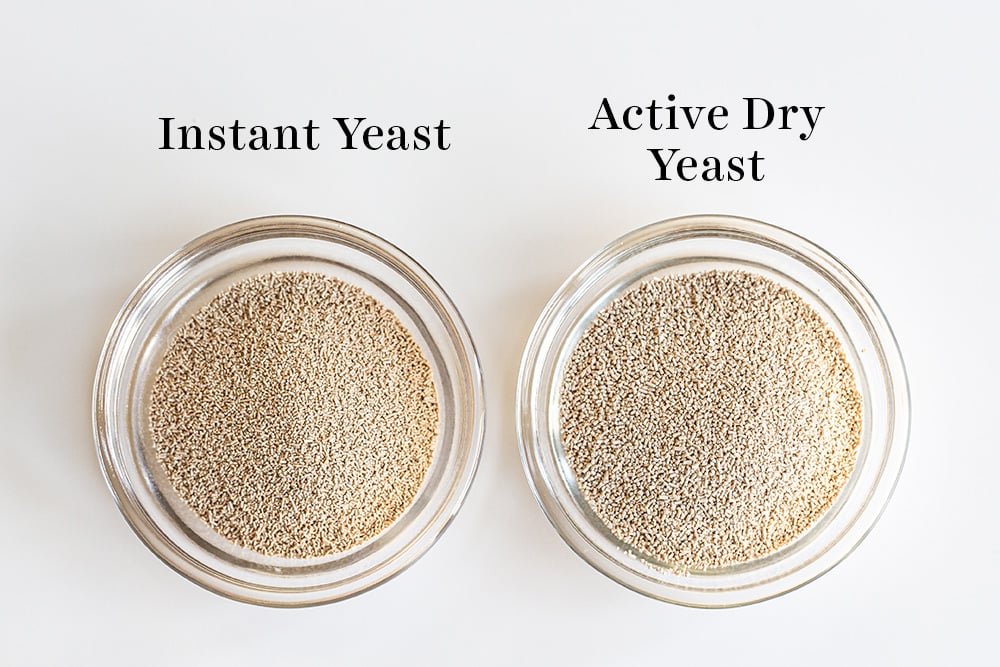
If you don’t have or can’t find instant yeast, you can easily use active dry yeast instead at a 1:1 ratio. Add it right in with the dry ingredients like instant yeast, but just note that the dough will take about 20% longer to rise.
Alternatively, you can speed up that rise time slightly; simply combine it with the warm water and a pinch of the sugar called for in the recipe, and allow it to proof until it becomes bubbly (about 5 minutes) before adding into the bowl with the other ingredients. Learn more about the different types of yeast, and how to substitute yeasts, here.
Can I Knead the Dough By Hand?
Yes! Be sure to knead the dough properly so the breadsticks hold their shape and don’t become sad flat sticks. I call for a stand mixer to make easy work of kneading in this recipe, but you can also knead by hand. Be prepared for a bit of a workout, as you’ll need to knead by hand for about 15 to 20 minutes. You can see my full tutorial on how to knead dough here.
How to Tell When Dough Is Risen
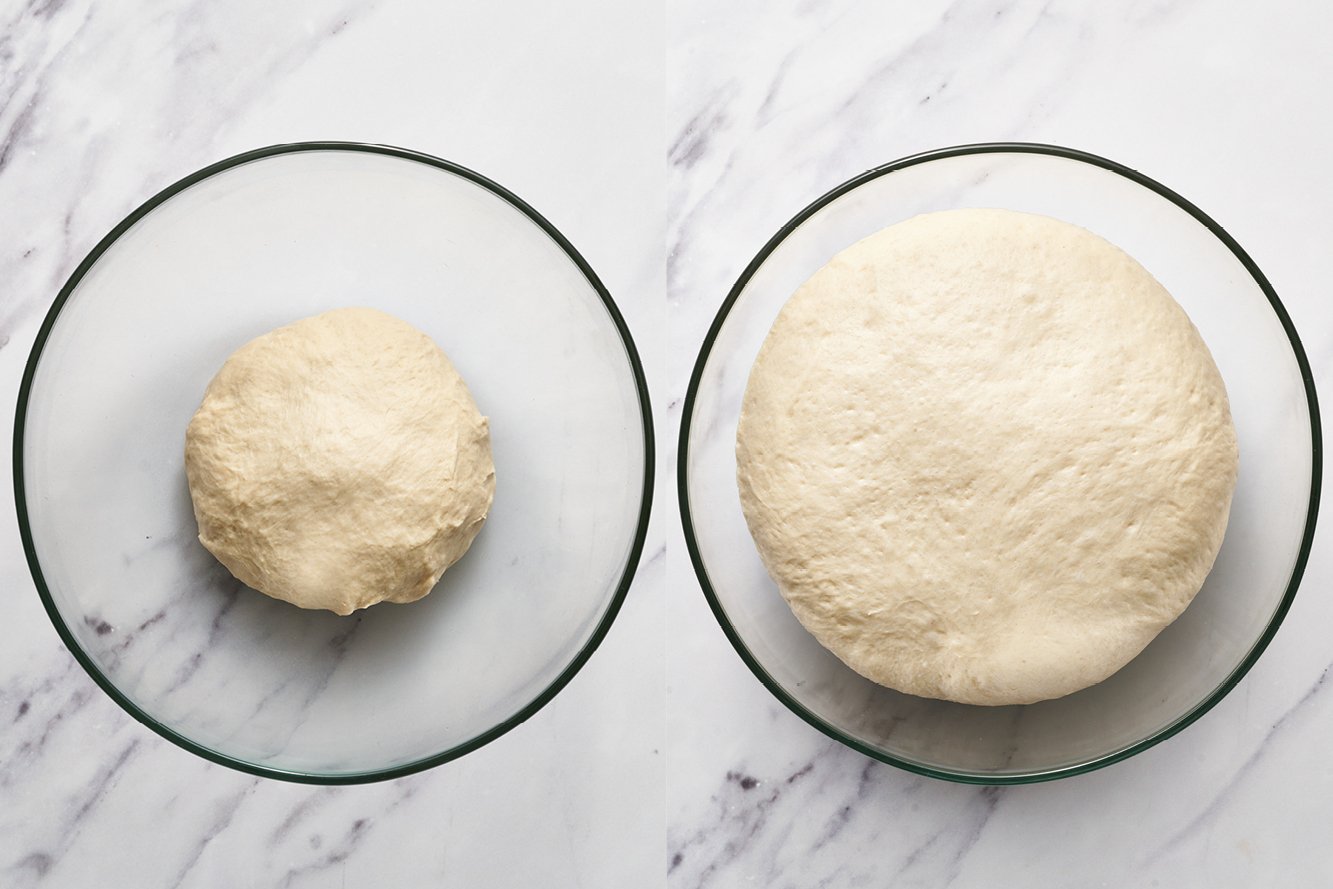
- After kneading, shape the dough into a ball.
- Place in a lightly oiled mixing bowl. I like to use glass and take a picture so I can see how much it’s rising later.
- Cover the bowl with plastic wrap, foil, or a clean kitchen towel. Let the dough rise in a warm, draft-free location. Ideal rise temperatures are between 80°F and 90°F. Lower temperatures will require more rising time.
- The dough is done rising when it’s about doubled in volume and passes the “ripe” test. Gently stick two fingers in the risen dough up to the second knuckle and then take them out. If the finger marks remain, the dough is ready for shaping. If not, cover and let the dough rise longer until it is.
How to Shape Breadsticks
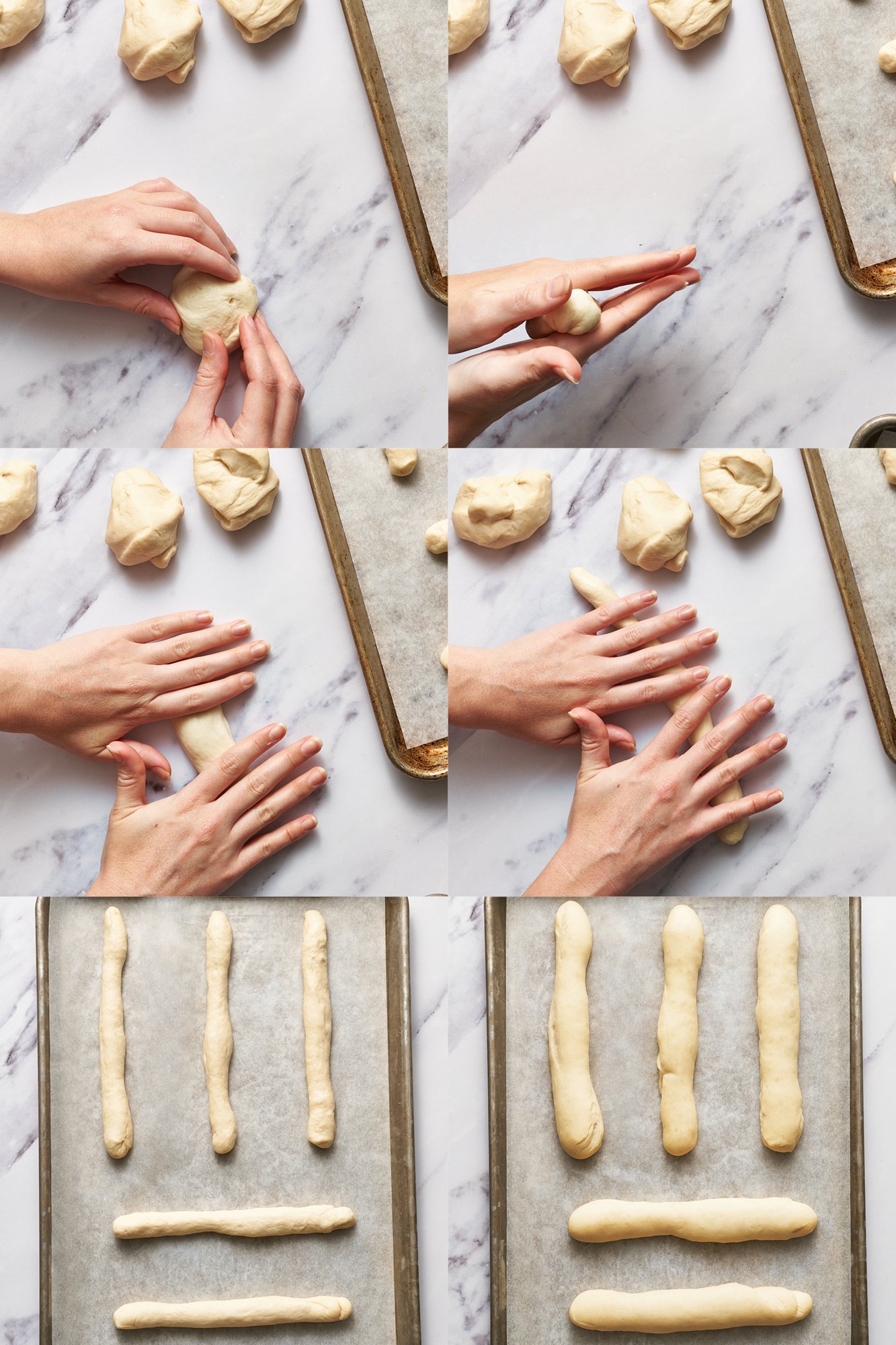
- Once the dough is risen, press it down to deflate it slightly.
- Place the dough onto a clean surface (not a floured surface).
- Use a bench scraper to section the dough into 12 equal pieces. Don’t worry if they’re not perfectly equal in size – but if you prefer, you can weigh the entire mass of dough, divide that number by 12, then portion each piece perfectly by weight.
- Roll each piece of dough into an 8-inch log. Don’t worry if they’re not perfectly shaped.
How to Make Breadsticks Ahead of Time
Basically all yeast doughs can be made ahead of time and baked off later. Refrigerating stunts the rise time and can actually allow more flavor to develop!
Fridge option:
Allow the dough to rise once and shape the breadsticks. Once shaped, cover them well (so they don’t dry out) and place in the refrigerator for up to 24 hours.
Bring to room temperature as the oven preheats before baking as the recipe directs. If the breadsticks haven’t doubled in size yet, allow them to sit at room temperature until doubled.
Freezer option:
To make ahead further in advance, you can freeze the dough after it has risen for the first time and been shaped into logs.
Place the shaped breadsticks on a baking tray lined with parchment, freezing just until solid, and then transfer to a ziptop bag or airtight container to store in the freezer for up to 2 months.
Once ready to bake, place the frozen breadsticks on parchment-lined baking trays and allow to thaw to room temperature. Let rise until an indentation made with your finger into the dough remains. Proceed with the recipe as written.
Can I Double This Recipe?
Yes, if you have a large enough mixer (at least 6 quarts). Most home mixer bowls won’t mix such a big batch of dough well enough.
If you’re using a 5-quart tilt-head mixer, your mixer may become overheated with that amount of dough. So I recommend simply making a single batch of dough twice.
How Long Will These Breadsticks Keep?
Breadsticks are best served right out of the oven, but they will keep for 3 days in an airtight container.
To refresh, place the breadsticks on a baking sheet and reheat in the oven at 425°F for 4-5 minutes, or until warmed through. You can also re-brush with butter and sprinkle with garlic powder and salt at this point, if you wish.
How to Freeze Breadsticks
Place the baked, cooled breadsticks in an airtight container and store in the freezer for up to 2 months. Thaw at room temperature for a couple of hours, then place the breadsticks on a baking sheet and reheat in the oven at 425°F for 4-5 minutes, or until warmed through.
You can also re-brush with butter and sprinkle with garlic powder and salt at this point, if you wish, before serving.
What to Serve with Copycat Olive Garden Breadsticks:
- A side salad
- Marinara sauce
- Creamy soup, like my Pot Pie Soup
- Your favorite pasta dish
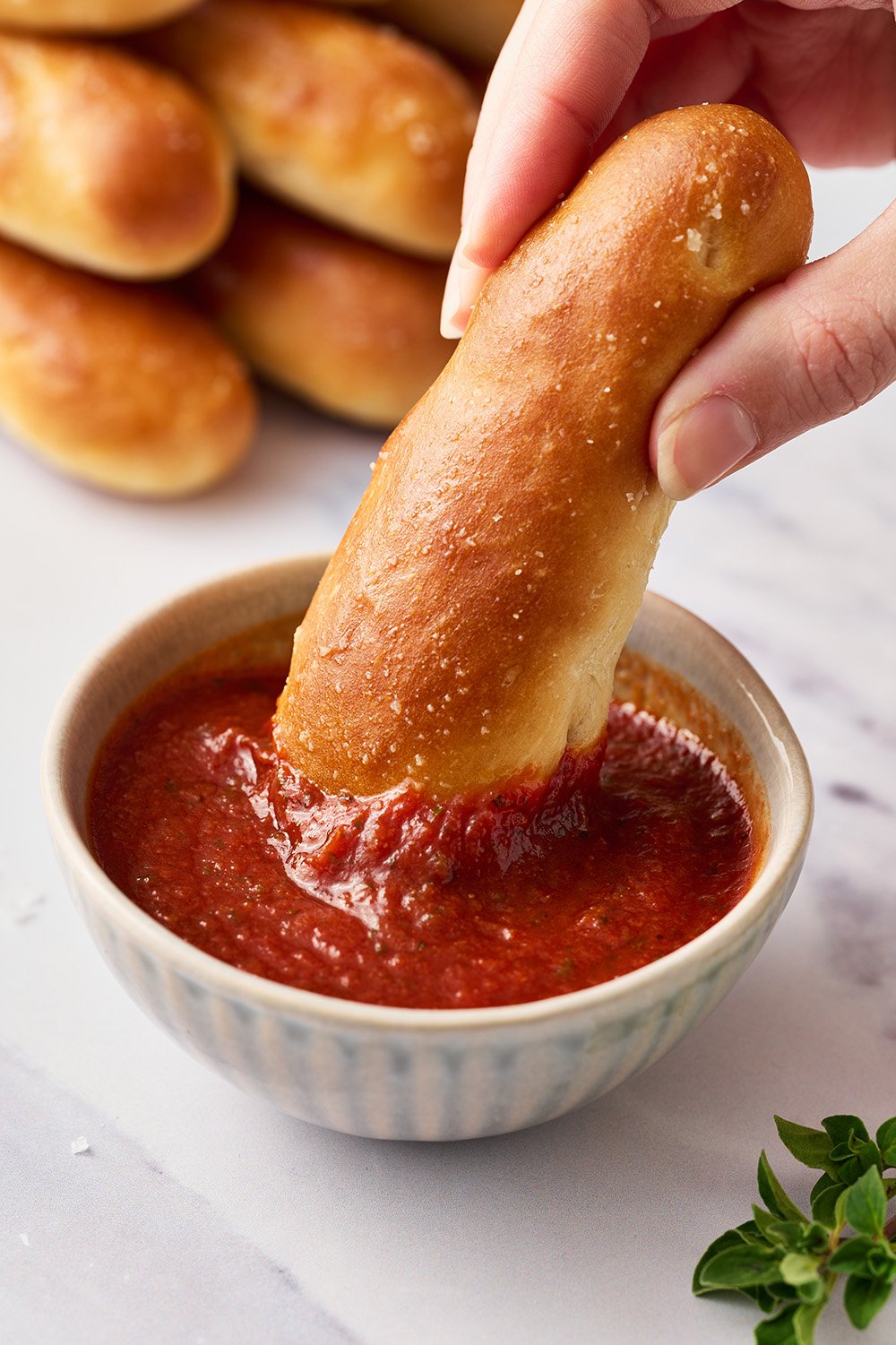
More Recipes You’ll Love:
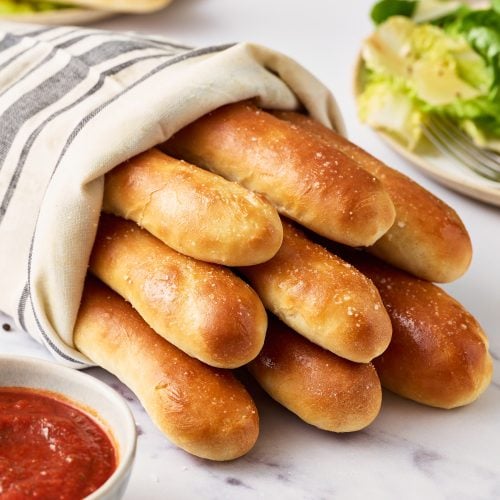
Copycat Olive Garden Breadsticks
Email This Recipe
Enter your email, and we’ll send it to your inbox.
Ingredients
For the dough:
- 1 cup plus 2 tablespoons (250 grams) warm water, about 100-110°F*
- 1 1/2 teaspoons instant yeast
- 2 tablespoons (25 grams) granulated sugar
- 3 tablespoons (42 grams) unsalted butter, melted
- 1 3/4 teaspoons fine sea salt
- 3 cups (381 grams) bread flour, plus more as needed**
For the topping:
- 2 tablespoons (28 grams) unsalted butter, melted
- 1/2 teaspoon kosher salt
- 1/4 teaspoon garlic powder
Instructions
- Prepare two baking sheets lined with parchment paper and set aside.
- In the bowl of a stand mixer fitted with a dough hook attachment, combine the water, yeast, sugar, melted butter, and salt. Begin to gradually add the flour while the mixer runs on low speed. Increase speed to medium and knead the dough for about 10-15 minutes, or until it is tacky and very elastic. Add more flour, a tablespoon at a time, if the dough is extremely sticky.
- Remove the dough and place in a lightly oiled bowl and cover with plastic wrap. Let rest in a warm place until doubled in size, about 1 hour to 1 1/2 hours (the exact proof time will depend on your kitchen environment; the warmer it is, the faster your dough will proof).
- Once doubled in size, divide the dough into 12 portions (use your kitchen scale for accuracy, but it should be approximately 57 grams per piece). Roll each piece of dough into an 8-inch log. Place the dough logs on your parchment-lined baking sheet, about 2 inches apart. Cover, and let rise until doubled in size, about 1 hour to 1 1/2 hours.
- Preheat your oven to 400°F. Bake for 12 to 14 minutes, or until golden brown. Remove from oven and immediately brush with melted butter. Combine the salt and garlic powder and sprinkle evenly over breadsticks. Serve warm.
- To refresh, place the breadsticks on a baking sheet, and reheat in the oven at 425°F for 4-5 minutes, or until warmed through. You can also re-brush with butter and sprinkle again with garlic powder and salt, if you wish.
Recipe Notes
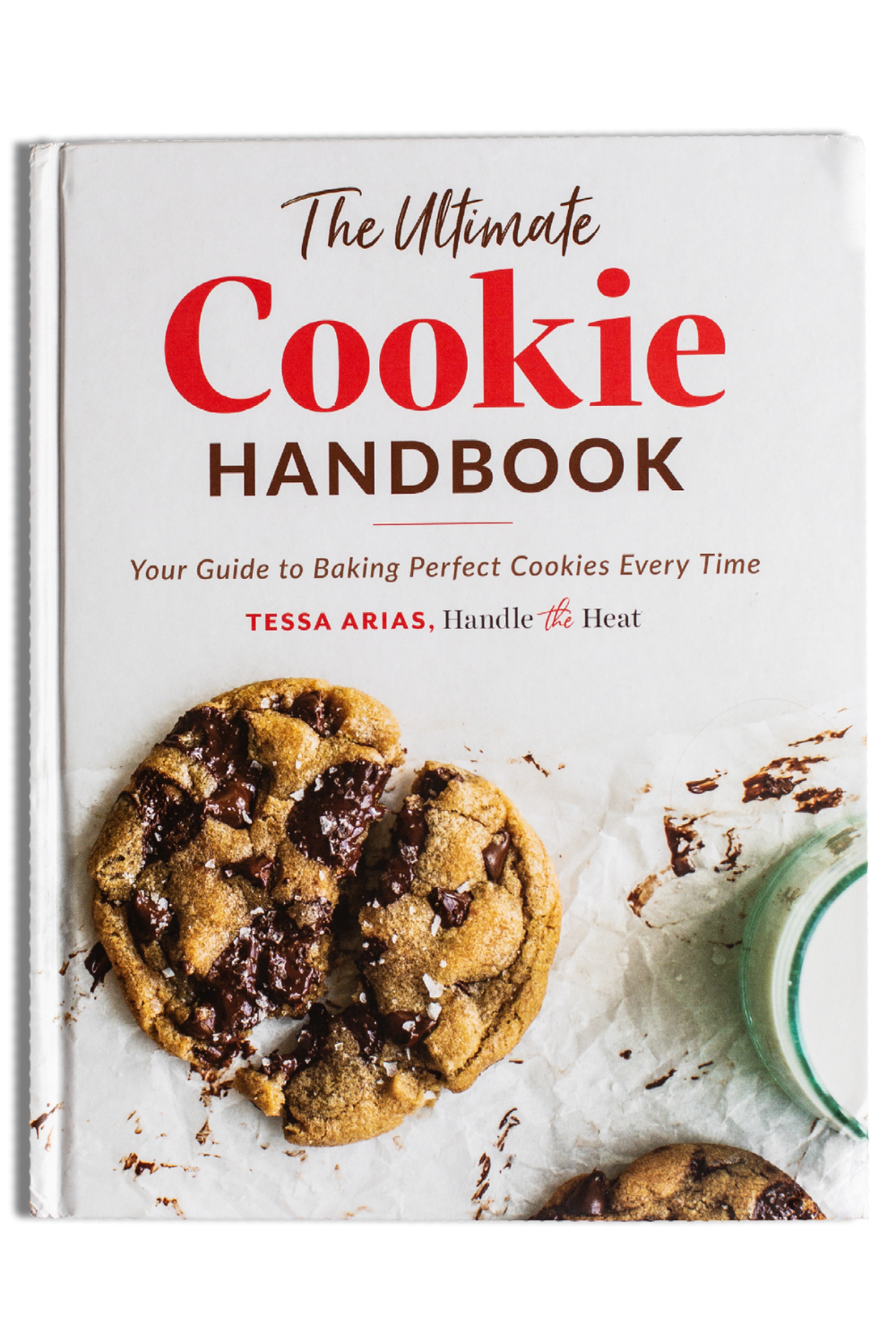
The Ultimate Cookie Handbook
Learn the sweet SCIENCE of cookie baking in a fun, visual way to customize your own recipes frustration-free. Plus, my best 50+ homemade cookies!
This post was originally published in 2013 and updated in 2023 with new photos and recipe improvements. Photos by Joanie Simon.
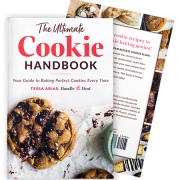
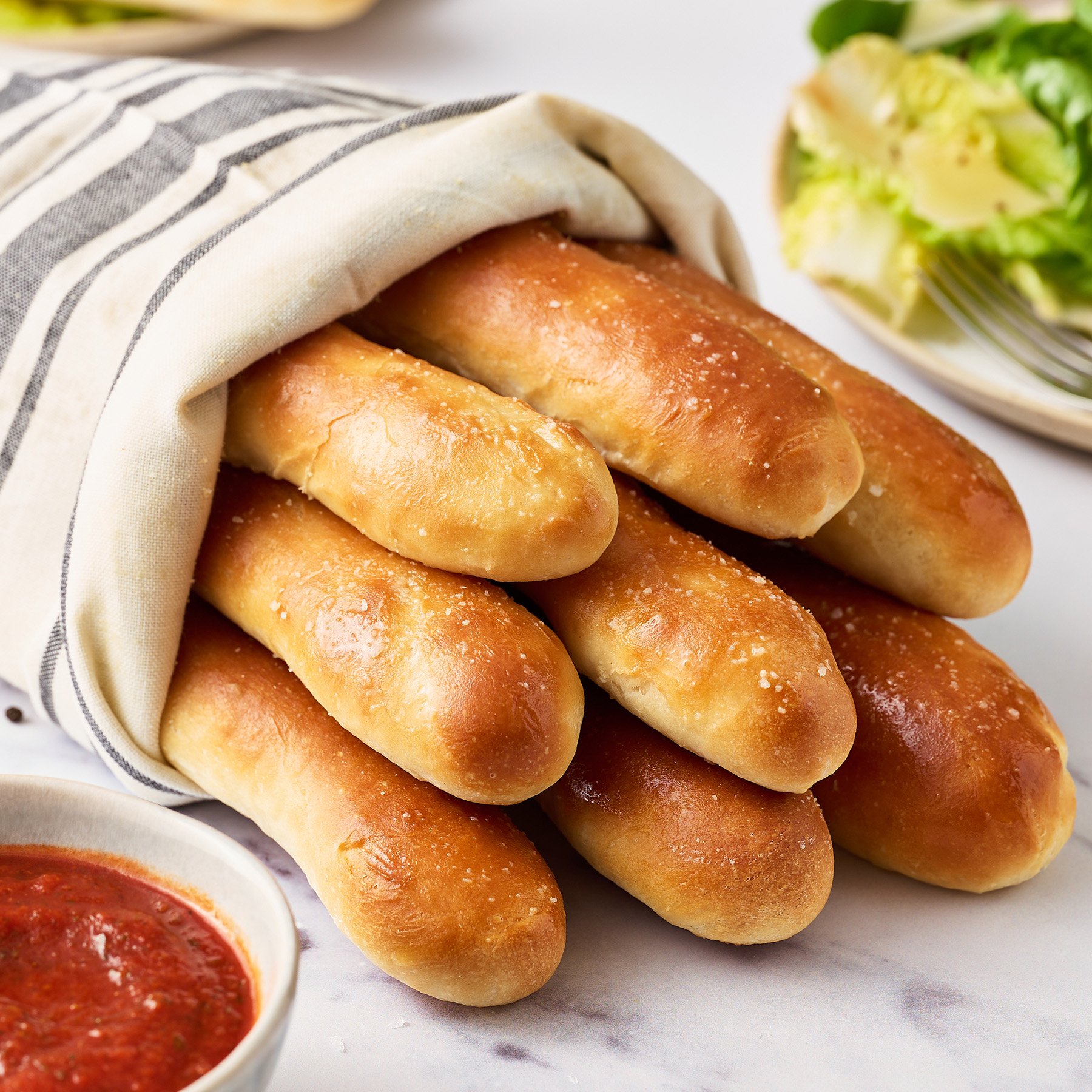
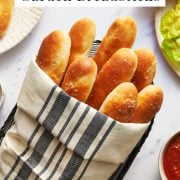
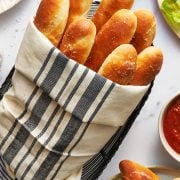
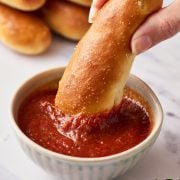

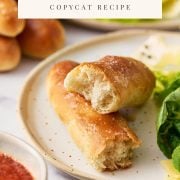



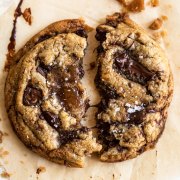
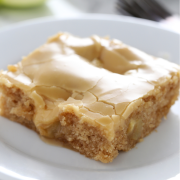

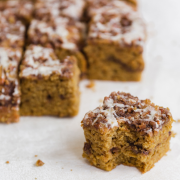
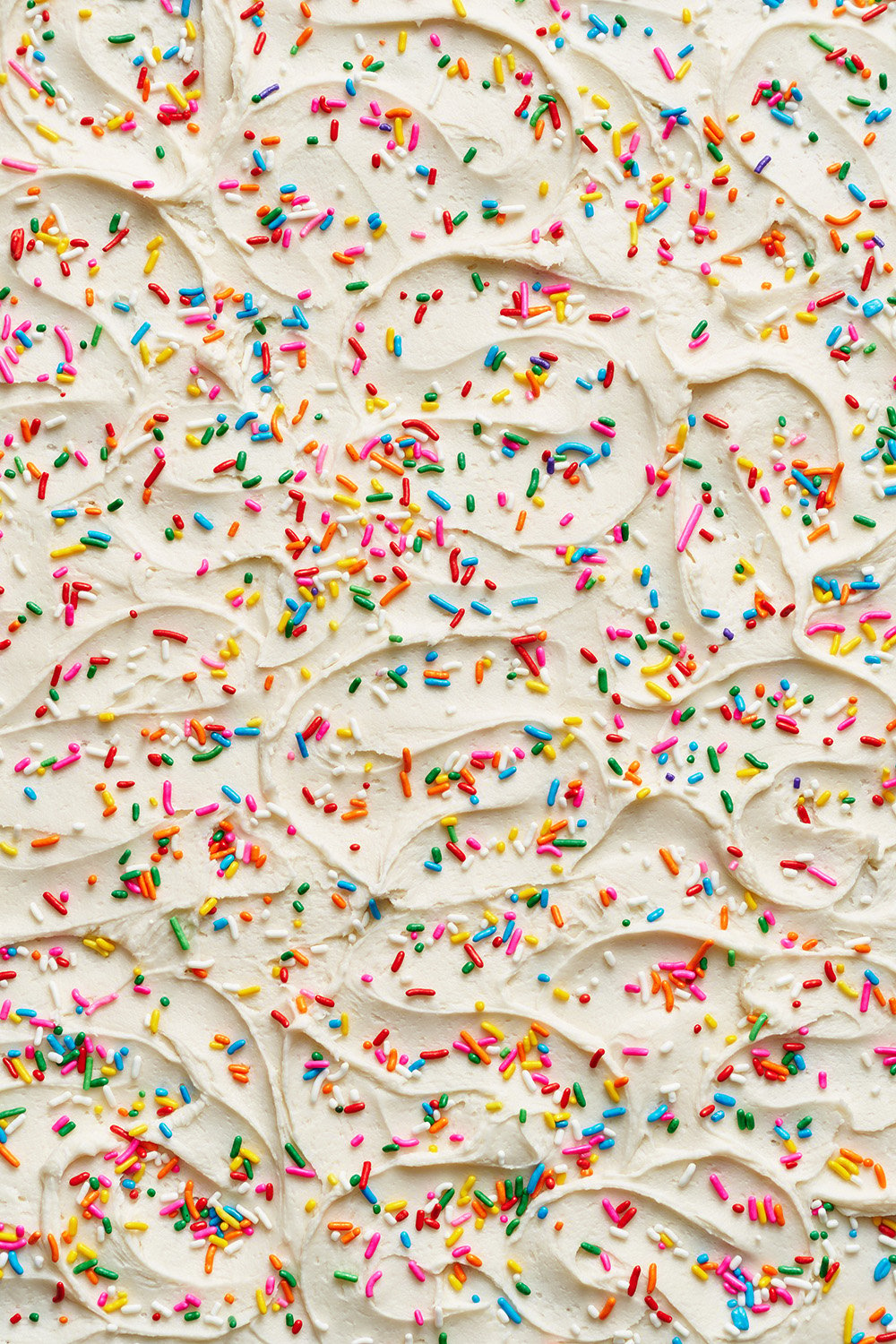
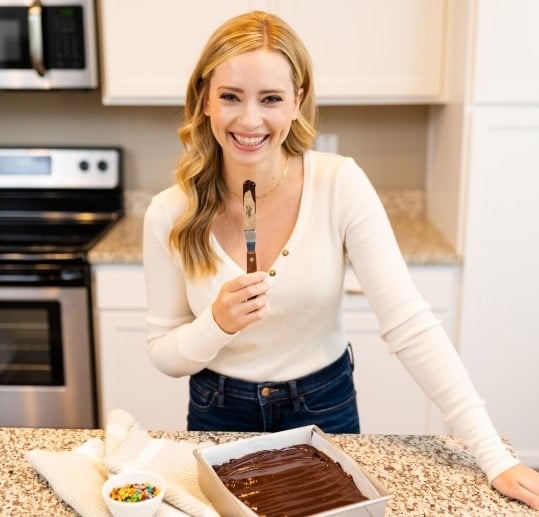

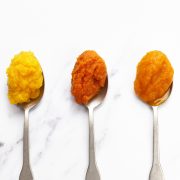
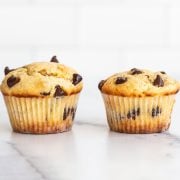
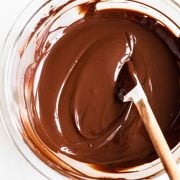









I’ve never made bread sticks in my life and I tried this recipe today. It was very easy to follow, very easy to make and they are delicious. I actually like the texture of these more than olive gardens. Thank you for posting this recipe for us!!!
Woohoo! So happy to hear that, DJ!!
This recipe isn’t the best.
Maybe it’s cuz I’ve never been good at making bread, or maybe it’s cuz I used AP Flour instead of Bread Flour, or maybe even it’s cuz I transferred it to another plate while it was rising.
But one thing’s for certain. It wasn’t a hit at my house. They had a weird kinda crumbly crispiness on the crust, but weren’t browned at all. They had a subtle taste that wasn’t pleasant.
There’s still a reason this isn’t 1-2 stars though. The inside was fluffy just as promised, and the garlic salt kinda just washed out that weird taste.
My question: What did I do wrong?
Hi Emma! I think you self-diagnosed a lot of the issues you had here! Firstly, using all purpose flour instead of bread flour will generally result in less-than-perfect bread. The extra protein content in bread flour gives your bread structure, and as you (or your stand mixer!) knead the dough, you activate the gluten. Gluten provides the essential structure to breads, allowing the dough to stretch and expand as it rises! It’s also easy to under-knead bread, especially when using all purpose flour, as the lower protein content means it will take longer to build structure. This could definitely account for the odd exterior texture you mentioned. Tessa talks about the importance of proper kneading, and how to knead, in this post here!
Moving the dough part-way through the rising/proofing process can also mess with the final outcome. If you moved the dough, you knocked some of the air out and it probably needed a lot longer to proof properly after that move.
Another possibility is your ingredients; do you measure by volume, or weight? If you measure by volume, it’s so easy to add too much flour (or other ingredients) to a recipe. Baking really is a science, and too much or too little of anything can throw off the chemistry. Tessa talks about how to best measure your ingredients in this recipe here!
There are honestly several other things that could have gone wrong. Your yeast could be old. Your water could have been too hot at the very beginning and it killed the yeast. Your oven wasn’t hot enough when the bread hit the oven. It’s so hard to know for sure what went wrong here without baking alongside you, but I hope this does not discourage you from trying again! Successfully baking bread is one of the most rewarding baking experiences, and the end result will taste even better for it!
I hope something here helped you, and that you give these breadsticks another try sometime! Please reach out if you need any further help troubleshooting! Happy baking 🙂
Far and away the best breadstick recipe Ive tried. Soft and pillowy, great flavor, and couldn’t be easier to put together.
Hi Betty! I’m so happy you loved this recipe! Happy baking 🙂
Hi, these taste amazing! If I need to make the dough in advance of when I need the breadsticks ready for (ie dough will need to be made on the morning but won’t want the breadsticks until evening time) would it be ok to let them rise for longer or could they be refrigerated before being cooked? And if so would they go in the fridge before rising or after? I’m wanting to prepare the dough then be able to leave it until evening and when I come home just throw it straight in the oven but not sure how it would work.
Hi Zoe! So happy you love this recipe! I would definitely refrigerate your dough, rather than letting it rise for that much longer. Dough will continue to rise in the fridge, but much slower than at a warmer temperature. We haven’t tested making this recipe ahead, so we cannot guarantee the same wonderful results … but my advice would be to let the dough rise once, shape them, and then cover well with plastic wrap (but not too tightly; again, they will slowly continue to rise; you just don’t want them to dry out in the dry fridge!). Pull them out of the fridge a little before you’re ready to bake, and ensure they have had their full second proof. The second proof could take awhile, or not much time at all – it all depends on the ambient temperature in your kitchen. Once they have appropriately risen, follow the baking instructions per the recipe. I hope that helps! Let us know how they turn out!
So good!! These breadsticks were a hit! They were tender, fluffy, just the right texture. They were declared as “Better than Olive Garden’s” by my OG obsessed husband. We’ll be making again!! Thanks fit an awesome recipe!
I made these using my bread machine. I turned my oven to 170 then turned it off to do the 2nd rise. These turned out great. I am making them again but into sub size buns for meatball subs. Definitely worth making over and over
YUM! That sounds amazing, so happy you love this recipe!
Hello,
I feel so excited to try this recipe. Quick question: o you punch down your dough after the first rise before you weigh and shape the breadsticks?
Blessings!
Alexandra
Hi Alexandra! We’ll typically use a bench scraper to divide the dough into the 12 portions, which deflates the dough on its own, but you’re welcome to punch down the dough if you prefer 🙂 Can’t wait for you to try these, let me know if you have any other questions beforehand!
Love this recipe. The first time I followed the recipe exactly. The next time I used Rapid Rise Instant Yeast and skipped the first rise. As soon as the dough was mixed I rolled it out into a 7” x 12” rectangle and using a pizza cutter cut it into 12 – 1 inch strips. They came out delicious and I saved myself a lot of work b
Thanks for your tip about rolling out the dough and cutting with a pizza cutter. They were beautifully delicious!
Thanks for the tip!!
I’d like to try this next time!
These are amazing! Best homemade breadsticks I have ever had and way better than anything you can buy at the store! I didn’t have a scale to measure the weight of the breadsticks, so mine ended up being shorter and fatter, but that didn’t matter! They are so soft and light, just like the Olive Garden ones. It was also a really easy recipe and I say this as I held my 14 month old the entire time I made them because he was sick and didn’t want to be set down! Thank you for an amazing recipe!
Aw, yay! So glad this recipe was easy to make and delicious too! Hope your child feels better soon
Best breadsticks. I make them all the time and they come out perfect every time!
Love this recipe. Have been told by guests that they taste better than Olive Garden. The first time I followed the directions exactly. The second time, I pressed dough out to a 7 x12 rectangle, I used a pizza cutter and cut 1” strips. The breadsticks had a much nicer appearance.
Woohoo, the ultimate compliment! So glad everyone loved them 🙂 And great idea about using a pizza cutter!
Wonderful! Dumped everything in my bread maker. Set it on “dough.” Once that was done followed the rest of the recipe instructions.
So happy you loved this recipe!